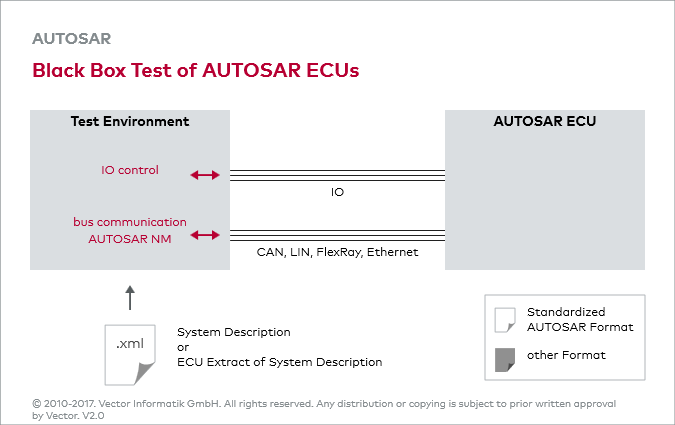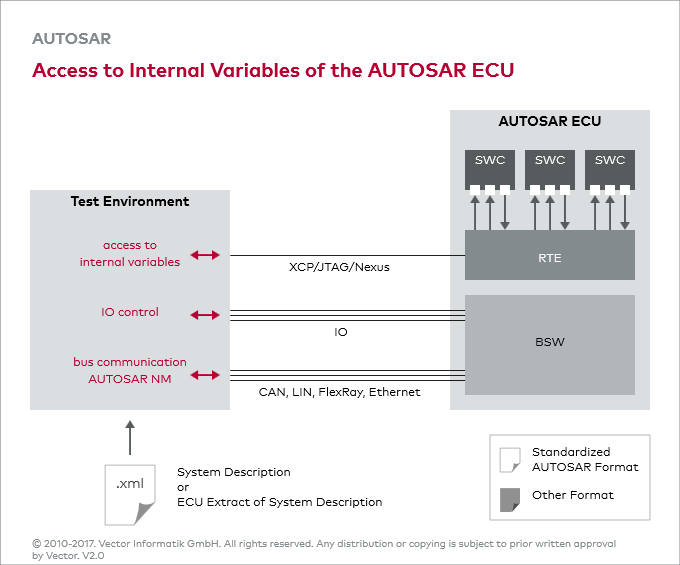Testing of AUTOSAR ECUs
During testing the same methods can be used for AUTOSAR ECUs that are used for ECUs with different internal software architectures. When the ECU is viewed as a black box, only the following items need to be considered:
- Network Management:
AUTOSAR has defined its own network management (NM) protocol, which differs from previously used protocols such as OSEK NM. The test environment must take this NM protocol into account and correctly prepare and process the related messages on the network channels. - File formats for the description of network communication:
The description of network communication in AUTOSAR is part of the System Description. Previous formats such as .dbc, FIBEX or .ldf, depending on requirements of the OEM, are replaced by the new format. The test environment must be able to process this format.
As an additional value in terms of testing and debugging ECUs, AUTOSAR provides a standardized internal software architecture that ensures that certain state variables exist in every AUTOSAR ECU and can be utilized in the test environment. Examples are the ECU state, which is available in the EcuM module, and communication states of the individual network channels that are stored in the ComM module. With appropriate implementation of the BSW modules, it is possible to access these state variables over an XCP connection to the ECU, e.g. over one of the networks or a debugging interface such as JTAG or Nexus. A matching description file (A2L) for these state variables can be provided by the BSW generators. As an alternative, the Monitoring and Debugging protocol that was specially defined by AUTOSAR for this purpose may be used.
AUTOSAR also offers benefits in terms of access to the application level. For example, the RTE can be generated in such a way that it is possible to access the data exchanged between the SWCs. Again, a suitable A2L file can be produced by the RTE generator.


